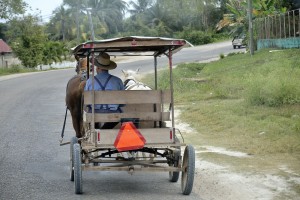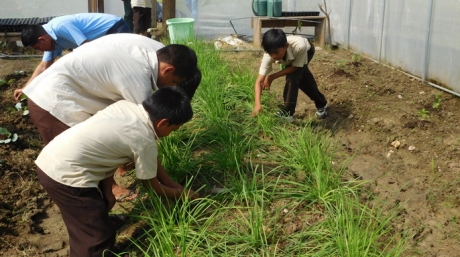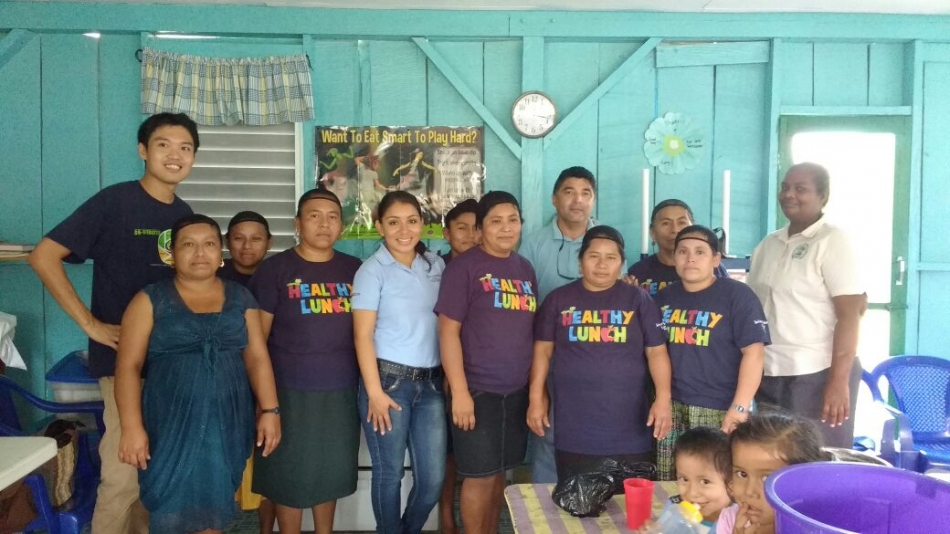
Weekend Special: Hearty meals, healthy families
Toledo: It is lunchtime at the village school in Santa Cruz in the Toledo district of southern Belize, and there is a babble of noise and chatter as kids settle themselves down at the long trestle tables. They eat enthusiastically from plates filled with stewed pork, boiled cassava, fresh tomato sauce and a carrot and radish salad. Meals include fruit and vegetables grown locally by the children’s farming families or in some cases from the school garden. Surveying the happy scene is Zita Bol, the school’s director, who watches the children eat with a sense of pride and satisfaction.


A few years ago, school meals were rare at the Santa Cruz school. In fact, Toledo is one of the poorest districts of Belize. According to Zita, the school could only provide the children with meals one or two days a week, with the frequency depending on the number of families that could afford to pay a USD 0.50 fee towards meals and the availability of parents volunteering to cook.
Sustainable Schools
In 2014, the government of Belize – a Caribbean country located on the northeastern coast of Central America – requested Food and Agriculture Organization (FAO) of the United Nations’ technical support to redesign, pilot and scale up a school meals initiative with the long-term aim of establishing a national programme that improves the diets of school children.
FAO and the Mexican Agency for International Development Cooperation (AMEXCID) implemented the Mesoamerica Hunger Free programme, a South-South and Triangular Cooperation (SSTC) initiative. The SSTC framework spurs collaboration between developing countries based on the concept of solidarity, breaking the traditional model of donor and recipient countries. The Hunger Free programme helps national governments implement food and nutrition security and rural development public policies, using a human rights approach and the right to adequate food.
Through the SSTC programme, Mexico, Belize and FAO piloted the Sustainable Schools model in four schools in Belize’s Toledo district. The model, based on Brazil´s experience and technically supported by FAO, looks holistically at strengthening school meal programmes, with activities ranging from better food education in schools to the development of healthier and more varied school meal menus. This model has been applied successfully in other schools throughout Latin America and the Caribbean.
New business for family farmers
In the past, the school committees bought ingredients mainly from grocery stores and local markets. Now, the programme has made it easier for family farmers of the Toledo district, many of whom are parents of students at the school, to put themselves forward as food suppliers. This has encouraged the development of a varied, seasonal menu drawn up based on what farmers can grow at the time.
Ensuring that school meals are culturally appropriate is also a high priority as Toledo is home to a wide range of cultures, including Mopan and Kekchi Maya, Creole, Garifuna, East Indians, Mennonites and Mestizos.
All four schools now have a school garden that is mostly used as a learning platform for children in growing their own fruits and vegetables. The schools’ infrastructure was also updated with well-equipped kitchens, storage areas and lunchrooms.
No one is more thrilled with this change than Zita. “Now we have better infrastructure and a school garden to use as an educational resource. We have the participation of the community, in addition, we count on our family farmers to supply food for our school,” she says.
Boosting the community

In fact, the school feeding programme provides opportunities for the community as a whole. The programme promotes the participation of local producers as suppliers of safe and quality food. By linking public purchase and family farming, the initiative boosts earning opportunities for smallholder farmers and in turn the local economy. It also diversifies eating habits and helps children develop healthy dietary practices, encouraging appreciation of native crops and local foods.
Stephen Sho is a teacher at another local school taking part in the pilot project in nearby Pueblo Viejo. According to Stephen, this programme has been valuable for their community and has managed to incorporate indigenous and traditional cultures.
“Now our students receive a balanced meal, and these are prepared with products that come from our community’s family farmers, who in most cases turn out to be their own parents,” he explains.
“People from Pueblo Viejo feel very satisfied because we all feel a part of this process. We all learn new concepts about the way we must eat and, most importantly, it is all done respecting our culture, identity and the way we have traditionally organized our community.”
Zita agrees. “Today, the community understands the importance of this programme and has been collaborating with teachers so it can be successful. Mothers, fathers, teachers and community leaders have seen the positive impact that we have had with the programme’s support, and we have all been a part of the process.”
Schools are the perfect setting to support the nutrition and development of young people, reaching children at an age when food and health habits are being formed. Promoting better diets through holistic school meal programmes supports the nutrition and wellbeing of students, and linking these programmes with purchasing from smallholders also sparks community development. The SSTC programme, through initiatives like the Mesoamerica Hunger Free programme, encourages countries to learn from each other by sharing experiences that have been proven to work.
– global bihari bureau(in arrangement with FAO)





